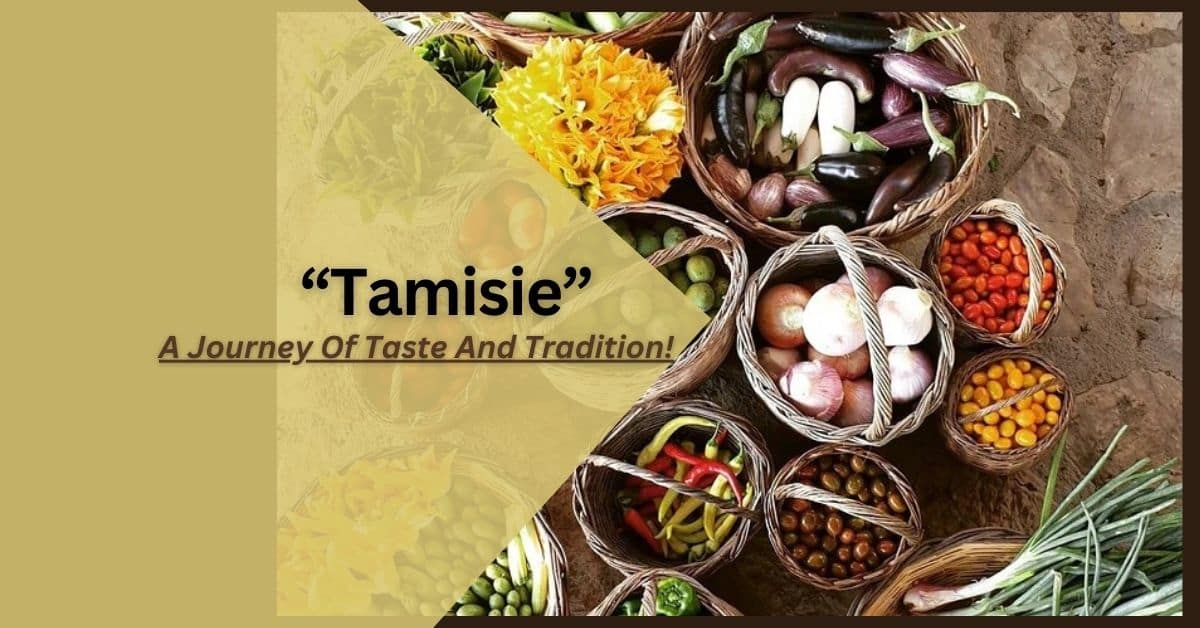In the diverse tapestry of Philippine culture, one finds an array of traditional practices, arts, and cuisines that reflect the richness of its heritage.
Among these treasures is “tamisie,” a culinary art deeply rooted in Filipino tradition. Tamisie is more than just a cooking method; it’s a testament to the Filipino people’s resourcefulness, creativity, and love for good food.
In this article, we delve into the history, significance, and flavors of tamisie, uncovering its cultural importance and enduring appeal.
Table of Contents
Exploring The Historical Roots And Development Of Tamisie – Unravelling Its Cultural Importance!
Tamisie can be traced back to the culinary practices of the Philippines, which are deeply embedded in its cultural heritage. Originating from the Filipino word “tamis,” meaning sweetness, tamisie represents a cooking technique centered around caramelization to balance sweet and savory flavors. Its roots are in pre-colonial times when indigenous communities utilized local ingredients and innovative cooking methods to create nourishing meals.
Over the centuries, as the Philippines became a melting pot of cultures due to colonization and trade, tamisie evolved, incorporating influences from various culinary traditions. Chinese, Spanish, and Malay influences played significant roles in shaping Filipino cuisine, including the techniques used in tamisie.
During the Spanish colonial period, the introduction of sugar cane cultivation further influenced the development of tamisie. Sugar became a prominent ingredient in Filipino cooking, not only for its sweetness but also for its preservative properties. This led to the widespread use of sugar in cooking, particularly in the tamisie technique, where it is caramelized to enhance the flavor of dishes.
The evolution of tamisie continued as Filipino cuisine adapted to changing tastes and preferences over time. As trade routes expanded and new ingredients became available, Filipino cooks experimented with different flavor combinations and cooking methods, further enriching the culinary landscape.
Today, tamisie remains an integral part of Filipino cuisine, cherished for its ability to elevate dishes with its unique blend of sweet and savory flavours. While traditional recipes endure, contemporary chefs and home cooks continue to innovate, incorporating tamisie into various dishes to suit modern palates.
In essence, the origin and evolution of tamisie reflect the resilience, creativity, and adaptability of Filipino culinary traditions, ensuring its enduring presence in Filipino kitchens and dining tables for generations to come.
Also Read: How Tall Is Jonathan Majors – Check Height Of A Rising Star!

The Significance of Tamisie in Filipino Culture – Embrace This Beloved Culinary Tradition!
The significance of tamisie in Filipino culture is immense because it’s not just a way of cooking—it’s a part of who we are. Tamisie, which means sweetness, isn’t just about making food taste good; it’s about bringing people together, celebrating our heritage, and showcasing our creativity.
In Filipino culture, food is a big deal. We love to eat, and we love to share our meals with others. Tamisie plays a special role in this because it adds a unique sweetness to our dishes that we all enjoy. Whether it’s adobo, pininyahang manok, or lechon kawali, tamisie enhances the flavours and makes the dish more delicious.
Tamisie is often associated with celebrations and gatherings. It’s a staple at fiestas, birthdays, and family reunions. When we cook with tamisie, we’re not just making food; we’re creating memories and traditions that bring us closer together as a community.
Moreover, tamisie reflects our resourcefulness and resilience as a people. It’s a technique that originated in simpler times when ingredients were limited, but creativity was abundant. By caramelizing sugar to create that sweet-savoury flavour, Filipino cooks found a way to make the most out of what they had, turning ordinary meals into something extraordinary.
In essence, tamisie is more than just a cooking method—it symbolises Filipino culture, heritage, and hospitality. It’s a reminder of our love for good food, our joy in sharing it with others, and our ability to find sweetness even in life’s simplest pleasures.
Must Check: Hairstorynetwork – Unlocking The Beauty Within!
Popular Tamisie Dishes – Try Out These Popular Recipes!
The versatility of tamisie allows it to be incorporated into a wide variety of dishes, each offering a unique flavour profile and culinary experience. Some of the most popular tamisie dishes include
Adobo:
A classic Filipino dish made with meat (commonly pork or chicken), soy sauce, vinegar, garlic, and spices. When cooked using the tamisie method, adobo takes on a caramelized sweetness that balances perfectly with its savoury flavours.
Pininyahang Manok:
A creamy chicken stew cooked with pineapples, bell peppers, and coconut milk. Tamisie adds a depth of flavour to this dish, enhancing the pineapples’ sweetness and the coconut milk’s richness.
Lechon Kawali:
Crispy fried pork belly seasoned with garlic, bay leaves, and peppercorns. Tamisie adds a caramelised crust to the pork, giving it a sweet and savoury glaze that complements its crunchy texture.
Bicol Express:
A spicy coconut milk stew made with pork, shrimp paste, chili peppers, and vegetables. Tamisie helps balance the chilli peppers’ heat, creating a harmonious blend of sweet, spicy, and savoury flavours.
Lumpiang Shanghai:
Deep-fried spring rolls filled with ground pork, carrots, onions, and spices. Tamisie adds a sweetness to the filling, making these spring rolls irresistible to anyone who tries them.
Each dish showcases the versatility and deliciousness of tamisie, proving that this cooking technique is truly a treasure of Filipino cuisine.
Recent Post: Capital One 48 Month Rule – Card Bonus Restrictions!

Preserving The Tradition Of Tamisie – Cook, Share, And Safeguard Its Legacy!
In a rapidly changing world, where modernisation and globalisation reshape cultural landscapes, keeping traditional practices like tamisie becomes increasingly essential. As younger generations become more disconnected from their cultural heritage, there is a risk of losing valuable culinary traditions passed down for generations.
To ensure the preservation of tamisie and other traditional Filipino cooking techniques, efforts must be made to document, promote, and teach these practices to future generations. This can be achieved through culinary education programs, cultural festivals, and community initiatives that celebrate Filipino food and heritage.
Additionally, home cooks and professional chefs alike can play a crucial role in keeping the tradition of tamisie alive by incorporating it into their cooking repertoire and sharing their knowledge with others. By embracing and honouring past culinary traditions, we can ensure that tamisie continues to be a vibrant and integral part of Filipino culture for years to come.
FAQs:
1. How does tamisie reflect Filipino tradition?
Tamisie showcases Filipino resourcefulness, creativity, and passion for gastronomy, deeply rooted in cultural heritage.
2. What makes tamisie more than just a cooking method?
Tamisie symbolizes the ingenuity and culinary prowess of Filipinos, elevating it to a cultural emblem of appreciation for good food.
3. Is tamisie commonly used in Filipino cuisine?
Yes, tamisie is a staple in Filipino cooking, adding depth of flavour to various dishes from adobo to desserts.
4. How does tamisie contribute to Filipino gatherings?
Tamisie-infused dishes are often served during celebrations, enhancing the communal dining experience with their sweet and savoury notes.
5. Can tamisie be adapted to modern cooking?
Yes, tamisie continues to evolve, with chefs and home cooks incorporating it into contemporary dishes, showcasing its versatility and enduring appeal.
Conclusion:
Tamisie, deeply ingrained in Filipino tradition, serves as a testament to the resourcefulness, creativity, and culinary ardor of the Filipino people, showcasing their love for delicious food and their knack for innovation in the kitchen.



